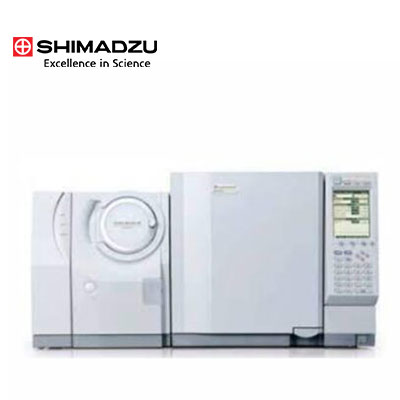GCMS-TQ8040NX
Shimadzu triple-quad GCMS-TQ8040 NX features smart technologies to boost the efficiency of routine analytical work. For example, Smart MRM provides fully-automated MRM method development. It automatically determines all optimum transitions and collision energies, seamlessly incorporating them into the Smart Database Series. With features like this, the GCMS-TQ8040 NX GC-MS/MS is so smart it almost runs itself! Perfect for applications in fields such as environmental monitoring and food science.
Highly Sensitive and Stable Ion Source
The effect of the filament’s electric potential on the ion source is reduced by placing more distance between the filament and ion source box. In addition, a shield blocks out radiant heat generated from the filament to ensure the ion source box temperature remains uniform. Since this prevents any active spots within the ion source, it provides higher sensitivity for analysis. (Patent: US7939810)

High Performance Quadrupole Filter
The high-accuracy mass filter with pre-rods and patented electric field control technology achieves high-accuracy mass separation performance. Also, the pre-rods minimize quadrupole contamination and eliminate the need for quadrupole maintenance.


Flow Controller Achieves Exceptional Reproducibility
A new flow controller (AFC) with a CPU uses various control methods to control carrier gas flow to a constant flow speed, flowrate, or pressure. It can also accurately trace the analytical conditions already being used. The split line filter can be replaced without any tools. Internal contamination can be confirmed visually, ensuring filters are replaced at the proper time.

Automatic Method Creation
Smart MRM™ is a function that sets the optimal measurement time for each component, and automatically creates a method. Since only the data during the elution times of the targeted components is acquired, even when simultaneously analyzing several hundred components, detection occurs without any loss in sensitivity, even with trace concentrations.


Simultaneous Analysis of 490 Pesticides
Time Management during Instrument Startup/Shutdown
The mass spectrometer has to be operated in a vacuum condition, the startup and stopping of the system takes time depending on the condition. Determining this can be a challenge. Since the amount of time that the system takes when starting up or stopping is displayed in real time, it is easy to accurately determine when maintenance of the ion source or analysis is possible. Moreover, tasks that until now needed to be performed by the user, such as leak checks upon system startup and auto tuning, are now performed automatically.

Twin Line MS System, Simple Column Replacement
By connecting the outlet ends of two different columns to the MS at the same, different application data can be acquired without shutting OFF the MS vacuum. CID gas control is a method parameter, allowing acquisition of GC-MS and GC-MS/MS data in the same batch.

MRM Optimization Tool
Determining and optimizing MRM transitions for new compounds can require significant development time. The “MRM Optimization Tool“ automates the process by collecting product ion scan data and finding the optimum collision energy for each transition. Once established, the transitions are registered to one of the Shimadzu “Smart Database” files, and the MRM or Scan/MRM methods are created using Smart MRM.

Multianalyte Data Analysis with LabSolutions InsightTM
LabSolutions Insight quantitative analysis support software includes functionality for enhancing the throughput of multianalyte data analysis, making it especially helpful for routine analysis. Quantitative results for a series of data sets can be displayed at the same time for data analysis. Chromatograms for each set of sample data can be displayed side-by-side for each compound, making it easy to confirm peak detection and quantitative results. Color-coded flagging functionality makes it easy to quickly see peaks from any of multiple analytes that exceed criteria values. That drastically decreases the number of peaks that need to be checked and improves the efficiency of quantitative analysis process






